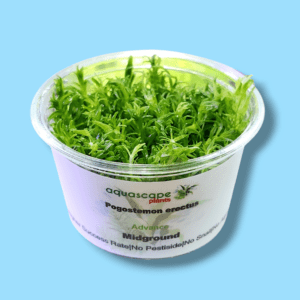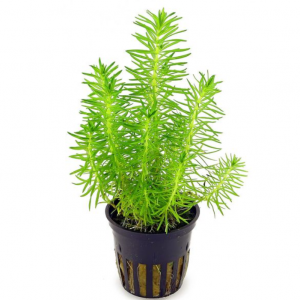
Crinum Natans bulb
Crinum natans is a striking bulb plant native to African rivers and streams. Its long, flowing, ribbon-like leaves add a dramatic touch to planted aquariums. Here’s everything you need to know about this unique aquatic plant.
Common Names: Floating Crinum, African Onion Plant, River Lily
Scientific Name: Crinum natans
Family: Amaryllidaceae
Origin: West and Central Africa (rivers and streams in Nigeria, Cameroon, etc.)
Appearance:
-
Leaves: Long, ribbon-like, wavy or crinkled, dark green, can grow up to 4 feet (120 cm) in length.
-
Growth Form: Submerged aquatic plant, but can grow emersed in shallow water.
-
Root System: Bulbous base (similar to an onion), with thick, white roots.
-
Flowers: Rare in aquariums, but produces beautiful white or pink lily-like flowers when grown emersed.
Crinum natans Care Tips
1. Tank Requirements:
-
Tank Size: Minimum 20 gallons (larger is better due to its size).
-
Lighting: Moderate to high (but can adapt to low light, grows slower).
-
Substrate: Nutrient-rich substrate (clay or root tabs recommended).
-
Water Flow: Prefers gentle to moderate flow (mimics its natural river habitat).
2. Water Parameters:
-
Temperature: 72–82°F (22–28°C)
-
pH: 6.0–7.5 (slightly acidic to neutral)
-
Hardness: Soft to moderately hard (2–15 dGH)
3. Planting & Maintenance:
-
Planting: Bury the bulb about halfway into the substrate (do not fully cover it to prevent rot).
-
Fertilization: Benefits from root tabs or liquid fertilizers (iron-rich fertilizers enhance leaf color).
-
Pruning: Remove old, yellowing leaves at the base. New leaves will grow from the center.
-
Growth Rate: Slow to moderate (patience is key).
4. Compatibility:
-
Fish: Safe with most community fish (tetras, gouramis, cichlids).
-
Inverts: Shrimp and snails won’t harm it.
-
Avoid: Plant-nibbling fish (like goldfish or some cichlids).
5. Propagation:
-
Produces bulb offsets (pups) that can be separated and replanted once they develop roots.
-
Rarely flowers underwater but may produce seeds if grown emersed.
Final Notes:
-
Hardy but slow-growing – don’t expect rapid growth.
-
Leaves may melt initially when moved to a new tank but will regrow if the bulb is healthy.
-
Great for midground or background in larger aquariums.
د.إ49.00
Compare🌱 Care Requirements (Quick Summary)
| Factor | Ideal Conditions |
|---|---|
| Light | Moderate to high (adapts to low light) |
| CO₂ | Beneficial but not required |
| Substrate | Nutrient-rich (clay, sand + root tabs) |
| Temperature | 72–82°F (22–28°C) |
| pH | 6.0–7.5 |
| Hardness | Soft to moderately hard (2–15 dGH) |
| Placement | Midground/background (needs space) |
Key Care Tips
-
Planting:
-
Bury the bulb only halfway (burying too deep causes rot).
-
Space plants 6+ inches apart (they grow large).
-
-
Fertilization:
-
Root tabs (high in iron) promote healthy leaves.
-
Liquid fertilizers help if no CO₂ is used.
-
-
Maintenance:
-
Trim old/yellow leaves at the base.
-
Slow grower—patience is key!
-
-
Propagation:
-
Grows “pups” (offsets) from the bulb—separate & replant.
-
Rarely flowers underwater.
-
⚠️ Common Issues & Fixes
-
Yellow Leaves: Usually due to nutrient deficiency (add root tabs/iron).
-
Bulb Rot: Caused by burying too deep—uncover if mushy.
-
Melting: May shed leaves when moved; new growth will come if bulb is healthy.
🐟 Tank Mates
✔ Good: Tetras, rasboras, gouramis, shrimp, snails.
❌ Avoid: Goldfish, cichlids, or plant-eating fish.
🎨 Aquascaping Uses
-
Tall background plant (great for hiding equipment).
-
Centerpiece in large tanks (wavy leaves add movement).
-
Emersed growth in paludariums (produces flowers).
🔎 Fun Fact:
Crinum natans is one of the few true bulb plants in the aquarium hobby, making it a unique and long-lived choice!





